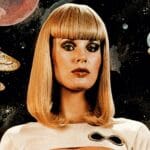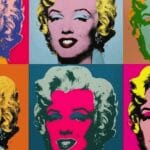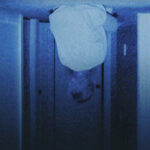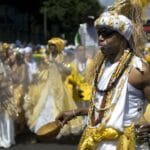Who knew that the beloved classic, The Wizard of Oz, hides a dark and twisted underbelly? Beyond the vibrant colors and enchanting tunes lies a hidden realm of spooky and unsettling facts. Get ready to uncover a tapestry of secrets that will leave you mesmerized and questioning everything you thought you knew about this beloved childhood tale.
Creepy Facts About The Wizard of Oz
We all love a good movie night with Dorothy, Toto, and the gang, but behind the sing-along tunes and colorful scenery of The Wizard of Oz lurk some pretty eerie details that might make you see the film in a new light.
Deadly Tin Man Makeup
You won’t believe this, but Buddy Ebsen, the actor originally set to play the Tin Man, had a terrifying experience. The silver makeup used to create the Tin Man’s metallic look contained aluminum dust. This dust caused a severe allergic reaction in Ebsen, leading to serious respiratory problems. He was so sick that he had to be hospitalized and, sadly, had to leave the production. Talk about a close call! Thankfully, Jack Haley stepped in and became the Tin Man we know and love.
Burning Witch’s Meltdown
Remember that iconic scene where the Wicked Witch of the West melts away? It turns out that scene was a little too intense, even for movie magic. The special effect used to make the witch disappear involved a dangerous chemical that accidentally melted Margaret Hamilton’s (the actress playing the witch) shoes and stockings. Not only that, but she also suffered burns on her face and hands during filming. Ouch!
Hanging Munchkin Rumor
This one’s a long-standing rumor that has sent chills down people’s spines for years. Some folks claim to see a munchkin hanging in the background of one of the movie’s scenes. Creepy, right? While film experts have debunked this as just a shadow from a bird or a piece of the set, the rumor persists and adds a layer of unsettling intrigue to the film’s legacy.
Risky Business: Dangerous Stunts and Close Calls
Filming back in the day wasn’t as safe as it is now, and The Wizard of Oz was no exception. The actors and stunt performers faced some seriously risky situations on set. Imagine a stuntman narrowly avoiding losing his leg during the chaotic tornado scene! And those adorable munchkins? They tumbled and fell more than a few times, creating real danger on set.
Casting Drama Behind the Scenes
Getting the perfect cast for The Wizard of Oz wasn’t a walk down the yellow brick road. There were last-minute replacements, creative disagreements, and a whole lot of behind-the-scenes drama. Can you imagine anyone other than Margaret Hamilton as the Wicked Witch? Well, at one point, actress Gale Sondergaard was considered for the role and was even slated to have a much more glamorous look.
Psychological Impact of Oz
Filming The Wizard of Oz wasn’t all sunshine and rainbows. The demanding schedule, intense performances, and even the costumes took a toll on the cast and crew. The film’s themes of loneliness and longing seemed to resonate a little too closely with some of the actors’ own experiences, creating a strange and somewhat unsettling atmosphere on set.
So, there you have it, a glimpse behind the curtain of one of the most beloved films of all time. It’s amazing how a story filled with such wonder and magic can also hold so many strange and unsettling secrets.
What are Some Dark Facts About The Wizard of Oz?
We’ve talked about the magic and wonder of Oz, but even a classic like this has its share of behind-the-scenes stories that are a little less enchanting. The making of The Wizard of Oz had its fair share of bumps in the road, some even a bit spooky, that make you see the yellow brick road in a whole new light.
A Cursed Production?
Some people believe that the production of The Wizard of Oz was cursed. This belief stems from the numerous accidents, illnesses, and other strange events that occurred during filming.
- Buddy Ebsen’s Near-Fatal Makeup: For instance, Buddy Ebsen, the actor originally cast as the Tin Man, became seriously ill due to the aluminum dust in the silver makeup used for his costume. He was hospitalized and ultimately had to be replaced.
- Margaret Hamilton’s On-Set Injuries: Margaret Hamilton, the actress who played the Wicked Witch of the West, also suffered burns on set when a pyrotechnic effect malfunctioned during filming.
While these incidents were unfortunate, it’s important to note that accidents and unforeseen circumstances are common occurrences on film sets, especially during that era. Attributing them to a curse is a matter of speculation.
Treatment of the Munchkin Actors
The treatment of the actors who portrayed the Munchkins in the film has been a subject of much debate and controversy over the years. While they brought a great deal of charm and whimsy to the film, there have been allegations of poor working conditions, low pay, and mistreatment by some members of the crew. It’s essential to acknowledge these claims and recognize the importance of treating all cast and crew members with respect and dignity.
Stereotypical Portrayals and Cultural Sensitivity
Looking back at The Wizard of Oz through a modern lens, it’s crucial to address the use of stereotypes and cultural representations that are now considered insensitive. The portrayal of the Wicked Witch of the West, for example, has been criticized for perpetuating negative stereotypes about women in power. Additionally, the depiction of the Munchkins, while intended to be whimsical, could be seen as reinforcing stereotypes about people with dwarfism.
It’s crucial to remember that societal attitudes and understandings of representation have evolved significantly since the film’s release in 1939. Acknowledging these changing perspectives allows for more nuanced and informed discussions about the film’s legacy.
Despite these behind-the-scenes controversies, The Wizard of Oz has left an indelible mark on popular culture. Its themes of friendship, courage, and the power of believing in oneself continue to resonate with audiences of all ages. While it’s essential to acknowledge the film’s troubled production history and its problematic elements, it’s equally important to appreciate its enduring impact on cinema and its ability to transport viewers to a world of wonder and imagination.
What is the Most Disturbing Scene in The Wizard of Oz?
While The Wizard of Oz is largely considered a family-friendly film, certain scenes might be perceived as disturbing, particularly by younger viewers.
- Melting of the Wicked Witch: This iconic scene, in which Dorothy throws a bucket of water on the Wicked Witch of the West, causing her to melt away, can be quite frightening for young children. The witch’s screams, her dissolving body, and her final words, “What a world! What a world!” can be unsettling.
- Flying Monkeys: The flying monkeys, with their menacing appearance and screeching sounds, are another element of the film that some viewers find disturbing. They represent the Wicked Witch’s henchmen and are often shown swooping down from the sky, creating a sense of dread and danger.
- Dark and Spooky Forest: The scene where Dorothy and her companions wander into the dark and spooky forest can also be unsettling. The trees have contorted faces, strange noises emanate from the shadows, and the overall atmosphere is eerie and suspenseful.
It’s worth noting that what one person finds disturbing, another may find exciting or thrilling. These scenes, while potentially unsettling, contribute to the film’s overall sense of adventure and highlight the contrast between the magical and sometimes perilous world of Oz and the safety of Dorothy’s home in Kansas.
What are Some Weird Facts About The Wizard of Oz Movie?
The Wizard of Oz is chock-full of fascinating trivia and behind-the-scenes tidbits that add another layer of intrigue to this classic film. Let’s delve into some of the weirder facts surrounding this beloved movie.
From Silver to Ruby: The Slipper Switch
Did you know those iconic ruby slippers were originally silver? In L. Frank Baum’s novel, Dorothy’s magical footwear is described as silver. However, the filmmakers decided to capitalize on the magic of Technicolor, a relatively new technology at the time, and made the shoes sparkle in vibrant ruby red. The change wasn’t merely aesthetic; it served to showcase the dazzling potential of color in film and further distinguish the fantastical world of Oz from the sepia-toned reality of Kansas.
A Painful Exit from Oz
Another fascinating tidbit involves Buddy Ebsen, the actor initially cast as the Tin Man. Ebsen’s experience on set took a turn for the worse when he suffered a severe allergic reaction to the aluminum dust used in his silver makeup. The reaction was so severe it led to hospitalization and forced him to drop out of the production. The role was then recast with Jack Haley, who luckily didn’t share the allergy. Talk about a close call! This incident brought to light the often-overlooked risks associated with early filmmaking techniques and makeup.
Movie Magic: The Reverse Tornado
The awe-inspiring tornado scene, a pivotal moment in the film, involved some ingenious reverse filming techniques. Instead of trying to recreate a natural disaster, the filmmakers opted for a clever workaround. They filmed the scene in reverse and then played it back, creating the illusion of a swirling vortex. This clever cinematic trickery adds a touch of magic to the movie and highlights the innovative spirit of early filmmakers.
Even beyond these curious facts, The Wizard of Oz is brimming with intriguing trivia. From the original choice of silver slippers to the use of innovative filming techniques, the making of this timeless classic is as captivating as the story itself. It reminds us that even the most beloved tales often have hidden depths and fascinating backstories waiting to be uncovered.
What is the True Story Behind The Wizard of Oz?
The true story behind The Wizard of Oz is a captivating blend of fact, fiction, and the enduring power of storytelling. It’s a story about creative ambition, technical innovation, and the cultural impact of a film that continues to enchant generations.
Inspiration from Humble Beginnings
The story of The Wizard of Oz did not begin on a Hollywood soundstage but rather in the mind of L. Frank Baum, an author inspired by his own life experiences and the desire to create a modern fairy tale for children. Published in 1900, Baum’s novel, The Wonderful Wizard of Oz, captured the imaginations of readers with its whimsical characters, fantastical setting, and timeless themes.
A Journey to the Silver Screen
The novel’s popularity paved the way for its adaptation into various stage productions. In 1939, Metro-Goldwyn-Mayer (MGM), a prominent Hollywood studio, took on the ambitious project of bringing The Wizard of Oz to the silver screen.
The production was a massive undertaking, pushing the boundaries of filmmaking technology and special effects at the time. Technicolor, the groundbreaking color film process used extensively throughout the movie, was still in its early stages, and filming presented numerous challenges.
Cultural Phenomenon and Enduring Legacy
The Wizard of Oz premiered on August 25, 1939, captivating audiences with its vibrant visuals, memorable songs, and heartwarming story. The film became an instant classic, cementing its place in cinematic history and leaving an immeasurable impact on popular culture.
Over the decades, The Wizard of Oz has been adapted into countless stage productions, television specials, and spin-off stories. Its characters have become cultural icons, and its songs, including “Over the Rainbow,” have achieved legendary status. The film’s enduring appeal lies in its ability to transport viewers of all ages to a world of imagination, reminding us that there’s no place like home, and sometimes, the greatest adventures lead us right back to where we started.
What are the Horrors of the Original Wizard of Oz?
While The Wizard of Oz is often remembered for its whimsical characters and enchanting story, there are undoubtedly elements within the original source material that some readers may find disturbing or unsettling. It’s important to approach these elements with a critical eye, recognizing the cultural context of the time in which the book was written and its potential impact on readers.
L. Frank Baum’s Darker Vision
L. Frank Baum’s original novel, The Wonderful Wizard of Oz, while intended as a children’s story, contains several scenes and themes that could be considered dark or unsettling by contemporary standards.
- Graphic Violence and Death: Baum doesn’t shy away from depicting violence and death, albeit in a fantastical manner. For instance, Dorothy’s house falling on the Wicked Witch of the East, resulting in her demise, or the Wicked Witch of the West’s threats to harm Dorothy and her companions could be disturbing to some readers.
- Themes of Fear and Insecurity: The story delves into themes of fear, insecurity, and the unknown, which, while relatable, might be unsettling for young or sensitive readers. Dorothy’s journey through this strange and unpredictable world, encountering various obstacles and threats, could be perceived as frightening.
- Grotesque and Menacing Creatures: The book features a cast of creatures that, while fantastical, could be perceived as grotesque or menacing. The winged monkeys, for example, with their ability to carry people away, or the Kalidahs, fearsome beasts with bear-like bodies and tiger heads, could be frightening, especially to young readers.
Reinterpreting Through Time
While these elements might raise eyebrows today, it’s essential to consider the context in which the book was written. In the early 20th century, children’s literature often included darker themes and imagery than what is typically found in contemporary books for young readers.
Furthermore, these darker elements often serve a purpose within the narrative, highlighting the contrast between good and evil, emphasizing the importance of courage and resilience, and ultimately contributing to the story’s message of hope and self-discovery.
Despite its potentially unsettling aspects, The Wonderful Wizard of Oz remains a significant work of literature. It sparks the imagination, encourages readers to confront their fears, and ultimately delivers a heartwarming message about the importance of home, friendship, and believing in oneself.
Is There a Dark Version of The Wizard of Oz?
While there isn’t a single, universally recognized “dark version” of The Wizard of Oz, the original book and subsequent adaptations have inspired countless reinterpretations that explore the story’s darker and more mature themes.
Reimagining a Classic: Darker Adaptations
- Literature: Several authors have reimagined The Wizard of Oz through a darker lens, crafting stories that delve into the characters’ backstories, explore the political and social undertones of Oz, and introduce more mature themes. Gregory Maguire’s Wicked: The Life and Times of the Wicked Witch of the West is a prime example, recasting the Wicked Witch as a sympathetic anti-heroine.
- Film and Television: Numerous film and television adaptations have also taken creative liberties with the source material, introducing darker storylines, exploring psychological complexities, and subverting audience expectations. The 1985 cult classic Return to Oz, for instance, is notably darker and more unsettling than the 1939 film.
- Music: Even musicians have drawn inspiration from the dark side of Oz. Progressive rock band Pink Floyd’s album The Dark Side of the Moon is often associated with the film, with fans claiming that the music and lyrics sync up with the movie in eerie and thought-provoking ways.
These reinterpretations highlight the enduring power of The Wizard of Oz and its ability to be reimagined and explored through different lenses, sparking new conversations and captivating new generations.
What Does the Dark Symbolize in The Wizard of Oz?
Darkness in The Wizard of Oz serves not just as a visual contrast to the vibrancy of Oz, but also as a powerful symbolic element that adds depth and meaning to the story.
The Unknown and the Path to Self-Discovery
One of the most prominent ways darkness is used is to represent the unknown. When Dorothy is first thrust into Oz, she lands in a dark and unfamiliar forest. This mirrors her own internal state—she is lost, confused, and scared. The darkness becomes a metaphor for the journey of self-discovery she’s about to embark on. As she navigates through the challenges and encounters various characters, she gradually moves towards the light, signifying personal growth and enlightenment.
Facing Fears and Inner Demons
The Wicked Witch of the West, with her dark attire and menacing demeanor, embodies the idea of facing one’s fears. Her presence creates a sense of dread and danger, representing the internal struggles that can hold us back. By confronting the Wicked Witch, Dorothy confronts her own insecurities and ultimately triumphs over them. The melting of the witch symbolizes the vanquishing of these inner demons, paving the way for personal liberation and empowerment.
Societal Commentary: The Darker Side of Reality
Some interpretations suggest that the contrast between the black-and-white world of Kansas and the colorful Land of Oz represents a deeper social commentary. Kansas, plagued by economic hardship during the Great Depression, might symbolize the harsh realities of the time—a world stripped of hope and opportunity. Oz, in its vibrant splendor, embodies escapism and the yearning for a better life.
However, this vibrant facade also hides a darker underbelly—corrupt leadership (the Wizard), social injustices (the Wicked Witches), and the ever-present threat of danger. This interpretation suggests that even in seemingly idyllic settings, darkness and challenges exist, challenging viewers to look beyond the surface and question the world around them.
Ultimately, the use of darkness in The Wizard of Oz underscores the film’s depth and complexity. It’s not just a children’s fairy tale, but a story about confronting the unknown, overcoming adversity, and recognizing the duality of light and darkness within ourselves and the world around us.
What Happened Behind the Scenes of The Wizard of Oz?
Behind the dazzling spectacle and timeless charm of The Wizard of Oz lies a production fraught with challenges, controversies, and a fair share of “Hollywood horrors,” revealing a stark contrast to the film’s whimsical facade.
Technological Challenges and On-Set Mishaps
- The Curse of the Tin Man Makeup: The initial silver makeup used on Buddy Ebsen, the first actor to portray the Tin Man, had near-fatal consequences. The aluminum dust in the makeup caused severe respiratory problems, leading to his hospitalization and eventual replacement. They switched to a paste for his replacement, but even that caused eye irritation. This incident exposed the dangers of early film makeup.
- Animal Welfare Concerns: While not uncommon for the era, the use of real lion skin for the Cowardly Lion’s costume raises ethical concerns about animal welfare and treatment in the entertainment industry.
Treatment of Actors and Allegations of Misconduct
- The Plight of the Munchkins: The actors who portrayed the Munchkins faced their share of difficulties. Many were paid very little and subjected to long hours and harsh working conditions. Rumors of off-screen misconduct and exploitation have also circulated for years, further adding to the film’s controversial legacy.
- Judy Garland’s Ordeal: Judy Garland, who played Dorothy, endured immense pressure during filming. Subjected to a strict diet and grueling work schedule, she reportedly relied on amphetamines and barbiturates to cope, taking a toll on her physical and mental health.
The “Cursed Production” Rumors
Over the years, rumors have persisted about a supposed curse plaguing the film’s production. These stories often involve:
- Unexplained Accidents and Injuries: These include the near-amputation of a stuntman during the tornado scene and Margaret Hamilton’s (the Wicked Witch) on-set burns from a pyrotechnic mishap.
- The “Hanging Munchkin” Legend: One persistent rumor claims a Munchkin actor committed suicide on set, and his silhouette can be seen hanging in the background of one scene. While debunked as a bird or a piece of equipment, the rumor continues to circulate.
Whether or not one believes in curses, these incidents paint a picture of a production fraught with challenges and a darker side that contrasts sharply with the film’s whimsical narrative.
Why is Half of The Wizard of Oz in Black and White?
The stark visual shift from sepia-toned Kansas to the vibrant Land of Oz is one of the most memorable aspects of the film. This wasn’t just an aesthetic choice; it was a deliberate storytelling device and a testament to the technical innovations of the time.
Technicolor Triumph: A World of Color Unveiled
The use of color was groundbreaking in 1939. The filmmakers chose to film the Oz sequences in Technicolor, a then-expensive and complex color process, to emphasize the magical and fantastical nature of Dorothy’s journey.
- Highlighting the Contrast: By presenting Kansas in sepia tones, a technique that gave the black-and-white film a slightly brownish tint, and Oz in full color, the filmmakers visually underscored the differences between Dorothy’s mundane reality and her extraordinary adventure.
- A Visual Metaphor for Dorothy’s Journey: The transition from sepia to color can also be interpreted as a metaphor for Dorothy’s growth and transformation. It’s as if her perception of the world changes as she embraces the impossible and discovers her own inner strength.
Practical Considerations and Artistic Ingenuity
While the artistic impact of the color transition is undeniable, there were also practical considerations.
- Cost and Complexity of Technicolor: Filming entirely in Technicolor would have been extremely expensive and technically challenging at the time. Limiting its use to Oz helped control costs and focus the visual spectacle on the most fantastical parts of the story.
- Seamless Transition with Sepia Tone: The use of sepia for Kansas wasn’t arbitrary; it helped create a smoother transition to Technicolor. Sepia, being warmer than pure black and white, blended more naturally with the vibrant hues of Oz, making the shift less jarring for the viewer.
The decision to film The Wizard of Oz partially in black and white and partially in color was a stroke of genius that has become iconic in cinematic history. It not only showcased the magic of Technicolor but also served as a powerful storytelling tool, enhancing the film’s emotional impact and solidifying its place as a timeless classic.
Do you know that dogs were historically used for dog sledding, and there are interesting facts about it?
Did you know? The black-bellied whistling duck has unique fun facts about its appearance and behavior.
You won’t believe the absurd facts about the powerful 1969 Camaro Z28.















